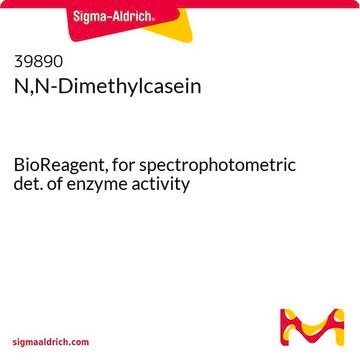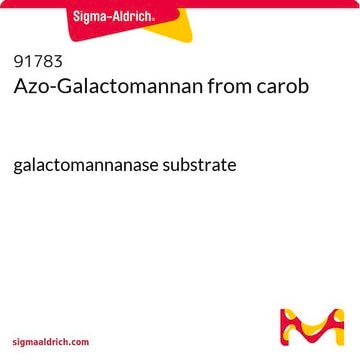N4377
4-Nitrophenyl valerate
chromogenic, ≥98% (TLC), liquid
Synonym(s):
Pentanoic acid 4-nitrophenyl ester
Sign Into View Organizational & Contract Pricing
All Photos(1)
About This Item
Empirical Formula (Hill Notation):
C11H13NO4
CAS Number:
Molecular Weight:
223.23
MDL number:
UNSPSC Code:
12352204
PubChem Substance ID:
NACRES:
NA.83
Recommended Products
Product Name
4-Nitrophenyl valerate, liquid
Assay
≥98% (TLC)
Quality Level
form
liquid
color
faintly yellow to dark yellow
storage temp.
−20°C
SMILES string
CCCCC(=O)Oc1ccc(cc1)N(=O)=O
InChI
1S/C11H13NO4/c1-2-3-4-11(13)16-10-7-5-9(6-8-10)12(14)15/h5-8H,2-4H2,1H3
InChI key
RJQXEHRFVKJLJO-UHFFFAOYSA-N
Related Categories
Application
4-Nitrophenyl valerate has been used as a substrate solution to measure the rate of p-nitrophenol formation using p-nitrophenyl valerate as substrate. It has also been used as a substrate to measure general esterase activity in hepatopancreas extracts.
Biochem/physiol Actions
4-Nitrophenyl valerate acts as a model substrate for carboxylesterase and butyrylcholinesterase.
Storage Class Code
11 - Combustible Solids
WGK
WGK 3
Flash Point(F)
Not applicable
Flash Point(C)
Not applicable
Personal Protective Equipment
dust mask type N95 (US), Eyeshields, Gloves
Choose from one of the most recent versions:
Certificates of Analysis (COA)
Lot/Batch Number
Don't see the Right Version?
If you require a particular version, you can look up a specific certificate by the Lot or Batch number.
Already Own This Product?
Find documentation for the products that you have recently purchased in the Document Library.
Customers Also Viewed
Sonja Kübelbeck et al.
Macromolecular bioscience, 18(7), e1800095-e1800095 (2018-06-06)
Herein, the synthesis of enzyme-polymer conjugates is reported. Four different activated polymers (mPEG-aldehyde, mPEG-NHS, maltodextrin-aldehyde, carboxymethyl cellulose aldehyde) are conjugated to the surface of protease, α-amylase, and lipase using two different strategies (reductive amination and alkylation with NHS-activated acid). Although
Xia Wen et al.
Toxicology, 416, 15-22 (2019-01-28)
Hepatic carboxylesterases (Ces) catalyze the metabolism of drugs, environmental toxicants, and endogenous lipids and are known to be regulated by multiple nuclear receptors. Perfluorooctanoic acid (PFOA) is a synthetic fluorochemical that has been associated with dyslipidemia in exposed populations. In
Lincoln A MacKenzie et al.
Toxicon : official journal of the International Society on Toxinology, 60(3), 406-419 (2012-05-23)
An enzyme capable of hydrolysing pectenotoxins (PTXs) and okadaic acid (OA) esters within the hepatopancreas of the Greenshell™ mussel Perna canaliculus was isolated and characterized. The enzyme was purified by sequential polyethylene glycol fractionation, anion exchange, hydrophobic interaction, gel filtration
Mikael Skaanning Jørgensen et al.
Microbial cell factories, 13(1), 33-33 (2014-03-08)
The industrially applied filamentous fungus Trichoderma reesei has received substantial interest due to its highly efficient synthesis apparatus of cellulytic enzymes. However, the production of heterologous enzymes in T. reesei still remains low mainly due to lack of tools for
Andrés M Attademo et al.
Ecotoxicology (London, England), 20(1), 274-282 (2010-11-30)
Activity of B-esterases (BChE: butyrylcholinesterase and CbE: carboxylesterase using two model substrates: α-naphthyl acetate and 4-nitrophenyl valerate) in a native frog, Leptodactylus chaquensis from rice fields (RF1: methamidophos and RF2: cypermethrin and endosulfan sprayed by aircraft) and non-contaminated area (pristine
Our team of scientists has experience in all areas of research including Life Science, Material Science, Chemical Synthesis, Chromatography, Analytical and many others.
Contact Technical Service












